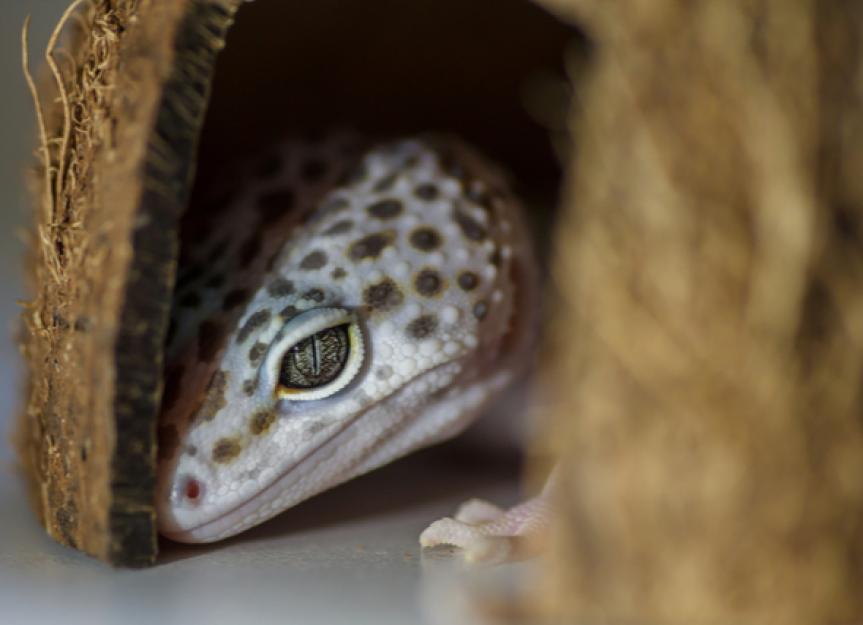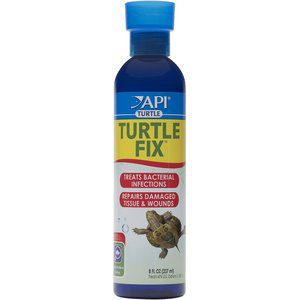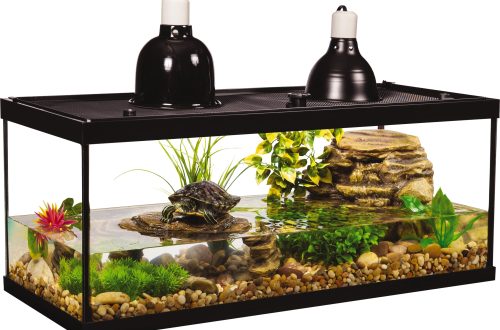
Is the lizard sick? How to recognize the disease.
Food refusal and weight loss.
Almost any disease of the lizard is accompanied by loss of appetite. This is a non-specific sign that something is wrong with the pet. It happens that loss of appetite occurs when there is insufficient heating in the terrarium, in the absence of ultraviolet radiation. Reptiles are cold-blooded animals and for the normal functioning of the gastrointestinal tract and high-quality digestion of food, they need a place to heat. Inadequately formulated diets can also lead to indigestion and food rejection (for example, a small amount of green food containing a lot of fiber and excessive vegetables and fruits rich in sugars that can cause fermentation in the intestines).
A decrease in appetite is also found in the norm, for example, during the period of sexual hunting, in pregnant females. In addition, any general diseases in the body often lead to food refusal and weight loss (damage by internal and external parasites, kidney and liver diseases, bacterial infections, neoplasms, injuries, stomatitis, etc.).
Refusal of food is like the first bell that you need to take care of the condition of the pet, its conditions of detention, to see if there are any other symptoms of the disease, and if necessary, contact a veterinarian.
Decreased activity, apathy.
Another non-specific symptom that can be observed in a number of pathologies, in violation of the content, as well as in the norm. Normally, some inhibition can be observed immediately before molting and in pregnant females. At low temperatures, the absence of ultraviolet radiation in the terrarium, with constant or temporary stress, reptiles fall into a state of apathy. Almost any disease is also accompanied by a depressed state of the pet (sepsis, kidney failure, impaired laying and egg formation, infectious and parasitic diseases, etc.).
Increase the size of the abdomen.
Normally found in pregnant females. When overfeeding, some lizards may develop obesity, which in turn adversely affects activity and health in general. With diseases of the heart, kidneys, and some other diseases, fluid (ascites) accumulates in the body cavity. Visually, this is also expressed by an increase in the abdomen. In addition, the internal organs, due to inflammation or other pathology, can give a symmetrical or asymmetric stretching of the abdominal wall (bloated intestines or stomach, a foreign object in the digestive tract, liver pathology, tumor growth, an overflowing bladder, impaired masonry and egg formation). In any case, in order to accurately determine the cause of the sudden increase in the size of the reptile’s abdomen, it is necessary to show it to a herpetologist, who will probe, possibly do an ultrasound or blood test to determine the pathology.
Brittleness and curvature of the bones.
In the process of growth and formation of the body of a lizard, it is extremely important to observe the necessary conditions in the terrarium and provide the pet with a complete diet. Often, with a lack of ultraviolet radiation, the required amount of calcium in the feed, a disease such as secondary nutritional hyperparathyroidism develops. Calcium begins to be washed out of the bones to meet the needs of the body. The bones become brittle, soft (for example, the bones of the jaw can grow and soften due to fibrous tissue). As a special case, rickets is observed in reptiles. A severe, advanced course of the disease can lead to convulsions, for the removal of which it is necessary to administer intramuscularly or intravenously calcium-containing drugs. But the treatment will not have any effect if, first of all, the pets are not provided with the necessary source of ultraviolet radiation, heating and top dressing containing minerals and vitamins.
Skin lesions and molting disorders.
Skin lesions can be either traumatic or non-traumatic. Often the owners are faced with various injuries, cuts, skin burns. Injuries can be caused both by other neighbor reptiles, and cats, dogs, birds living in the same apartment, and the reptile itself can injure itself on sharp objects and decorations in the terrarium or outside it, when falling. It is important to assess how severe the injury was to the pet, whether the internal organs are affected, and also to prevent inflammation due to the development of a bacterial infection in the wound. In case of severe lesions, an antibiotic course is pierced, and the wound is washed with disinfectant solutions (chlorhexidine, dioxidine) and ointments or sprays are applied (Panthenol and Olazol for burns, Terramycin spray, Solcoseryl ointment, dioxidine, to accelerate healing – Eplan).
Often there are various dermatitis, depending on the agent causing them, they can be bacterial or fungal. To accurately determine the cause of dermatitis, the doctor must examine a smear from the lesion under a microscope. Mastny ointments, baths with antiseptic solutions are prescribed, and in case of severe damage – giving drugs orally or injections.
On the body of lizards, seals can be found, which often turn out to be abscesses. Pus in reptiles has a dense curdled consistency, besides, abscesses have a dense capsule, so they are treated only surgically. It must be opened, the pus and capsule cleaned out, washed and treated with ointments containing an antibiotic until healing. It is also justified to pierce the antibiotic in such cases.
Under unsatisfactory conditions of detention or the presence of any disease in lizards, the course of molting is disturbed. Molting can be delayed, foci of unmolted skin remain on the body. This most often occurs when the body is dehydrated during the course of the disease, with insufficient humidity in the terrarium and the absence of a wet chamber for molting. Unmolted skin on the fingers can form constrictions and lead to necrosis (tissue death). Therefore, it is important to carefully examine the pet’s body, soak the remaining areas of old skin and carefully remove.
Bone fractures and tail drop.
With careless handling, falling from hands or other surfaces, the lizard can receive injuries of varying severity: fractures of the limbs, bones of the skull, spine. Spontaneous fractures can be seen in reptiles with secondary nutritional hyperparathyroidism. Fractures are usually fixed for a long time by a herpetologist, a course of calcium preparations and an antibiotic are prescribed. A spinal injury can lead to paralysis and disruption of the internal organs, in which case only the doctor makes predictions after the examination. Many lizards, when mishandled and frightened, tend to drop their tail. If this happens, the fracture site must be treated with an antiseptic solution. Usually, healing occurs without complications, a new tail grows, but in appearance it will differ somewhat from the previous one and from the entire body of the reptile in color, scale size and thickness.
Prolapse of cloacal organs.
It is important to evaluate two aspects: which organ fell out (bladder, intestines, genitals) and whether there is tissue necrosis. An ordinary owner is unlikely to figure it out, it is better to entrust this to a herpetologist). If there is no necrosis, the tissue is shiny, pink, the prolapsed organ is washed with disinfectant solutions and repositioned with antibacterial ointments. The cesspool of the day is closed for three days either with a gauze swab or sutures are applied. After 3 days, the reptiles are allowed to go to the toilet and checked for re-fallout. If there is already dead tissue (gray, edematous), then the doctor removes it surgically, prescribes a course of antibiotics and treatment. Dropout can be caused by a variety of factors. With general weakness, calcium deficiency in the body, the muscles of the cloaca weaken, which can lead to organ prolapse. Prolapse can occur with excessive attempts that occur when there is a stone in the bladder that interferes with urination, with constipation or the presence of a foreign object in the intestine, with inflammatory processes. The sooner you contact a specialist after the loss of the cloacal organs, the less likely it is to develop necrosis and the need for surgical intervention.
Respiratory failure.
Signs of diseases of the respiratory system can be discharge from the nose and mouth, shortness of breath (the lizard raises its head, sits with its mouth open, hardly inhales or exhales air). With the accumulation of mucus, the air, passing through the larynx, produces sounds similar to whistling, hissing. It should, however, be noted that very often lizards sit with their mouths open and are normal when they warm themselves, thereby regulating heat transfer. Most often, the causes of diseases of the respiratory system are low temperatures, inhalation of foreign particles, or liquids. During treatment, the temperature in the terrarium rises, antibiotics are prescribed, and, if necessary, other drugs to facilitate breathing.
Violation of defecation.
It is important to monitor the presence and nature of the stool in the pet. Most lizards defecate once or twice a day. The absence of stool may also indicate intestinal obstruction due to ingestion of a foreign object, compression by enlarged internal organs, eggs in pregnant females, and tumors. With a lack of calcium in the body, the work of the gastrointestinal tract is also disrupted, its motility is reduced.
The reverse process is diarrhea. Diarrhea is observed when feeding poor-quality food, with severe helminthiasis, bacterial and parasitic diseases. Diarrhea is terrible for the development of dehydration in an animal, so you need to find out the cause as soon as possible and start treatment.
Also, helminths, undigested food, blood (scarlet blood indicates injuries to the cloaca or large intestine, black blood is clotted blood from the upper gastrointestinal tract), feces can become frothy, fetid, and take on an unpleasant greenish tint. With such symptoms, it is necessary to seek diagnosis and treatment at a veterinary clinic.
Stomatitis
Against the background of unsatisfactory content, hypothermia, stress, the lizard’s immunity decreases. In this regard, inflammation and sores often appear in the oral cavity. The pet refuses to eat, as eating causes pain. In addition to establishing conditions and feeding, stomatitis requires complex treatment (antibiotic therapy, local treatments).
Sometimes similar signs can be present in various pathologies, which often cannot be differentiated at home. This requires special additional methods of examination and knowledge of the entire spectrum of reptile diseases. Therefore, if you feel unwell, it is best to show your pet to a professional herpetologist.





